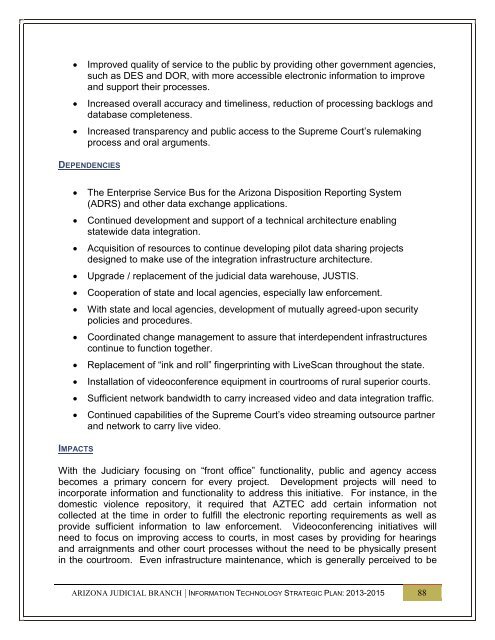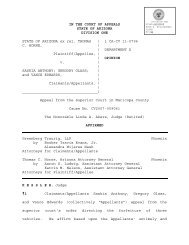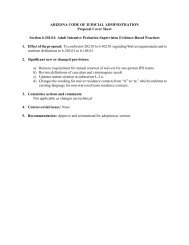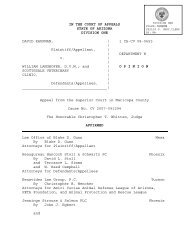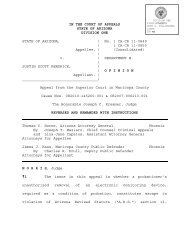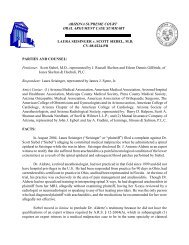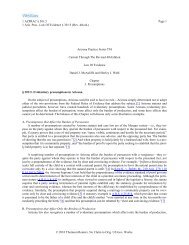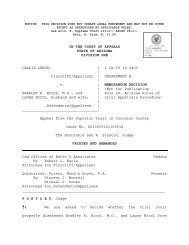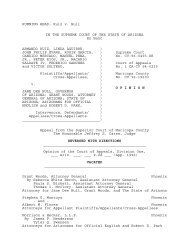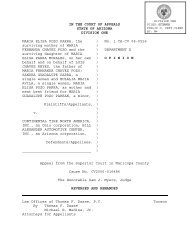Print Version - Arizona Judicial Department
Print Version - Arizona Judicial Department
Print Version - Arizona Judicial Department
You also want an ePaper? Increase the reach of your titles
YUMPU automatically turns print PDFs into web optimized ePapers that Google loves.
Improved quality of service to the public by providing other government agencies,<br />
such as DES and DOR, with more accessible electronic information to improve<br />
and support their processes.<br />
Increased overall accuracy and timeliness, reduction of processing backlogs and<br />
database completeness.<br />
Increased transparency and public access to the Supreme Court’s rulemaking<br />
process and oral arguments.<br />
DEPENDENCIES<br />
The Enterprise Service Bus for the <strong>Arizona</strong> Disposition Reporting System<br />
(ADRS) and other data exchange applications.<br />
Continued development and support of a technical architecture enabling<br />
statewide data integration.<br />
Acquisition of resources to continue developing pilot data sharing projects<br />
designed to make use of the integration infrastructure architecture.<br />
Upgrade / replacement of the judicial data warehouse, JUSTIS.<br />
Cooperation of state and local agencies, especially law enforcement.<br />
With state and local agencies, development of mutually agreed-upon security<br />
policies and procedures.<br />
Coordinated change management to assure that interdependent infrastructures<br />
continue to function together.<br />
Replacement of “ink and roll” fingerprinting with LiveScan throughout the state.<br />
Installation of videoconference equipment in courtrooms of rural superior courts.<br />
Sufficient network bandwidth to carry increased video and data integration traffic.<br />
Continued capabilities of the Supreme Court’s video streaming outsource partner<br />
and network to carry live video.<br />
IMPACTS<br />
With the Judiciary focusing on “front office” functionality, public and agency access<br />
becomes a primary concern for every project. Development projects will need to<br />
incorporate information and functionality to address this initiative. For instance, in the<br />
domestic violence repository, it required that AZTEC add certain information not<br />
collected at the time in order to fulfill the electronic reporting requirements as well as<br />
provide sufficient information to law enforcement. Videoconferencing initiatives will<br />
need to focus on improving access to courts, in most cases by providing for hearings<br />
and arraignments and other court processes without the need to be physically present<br />
in the courtroom. Even infrastructure maintenance, which is generally perceived to be<br />
ARIZONA JUDICIAL BRANCH | INFORMATION TECHNOLOGY STRATEGIC PLAN: 2013-2015 88


